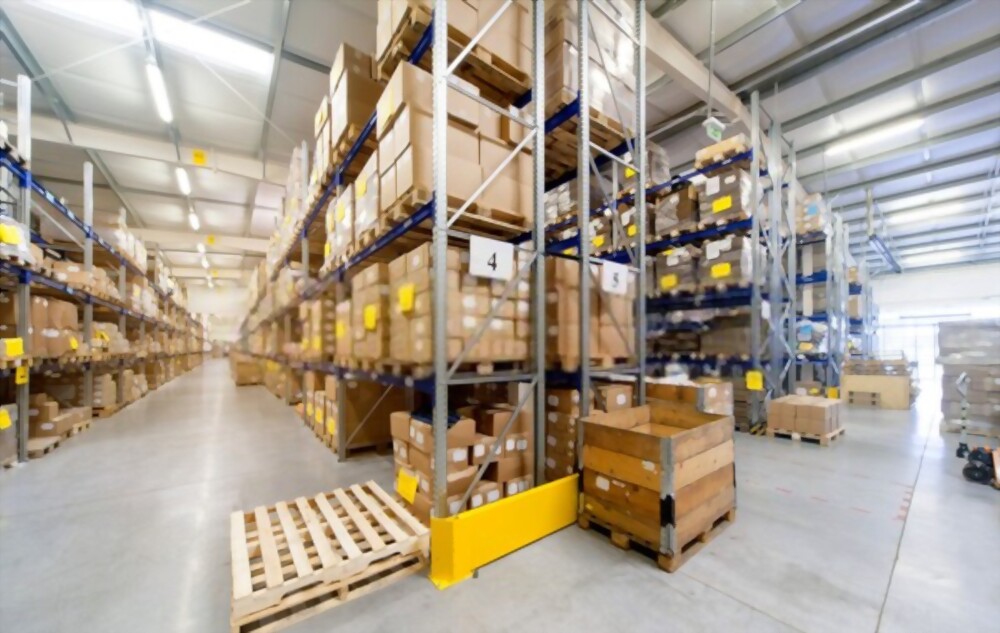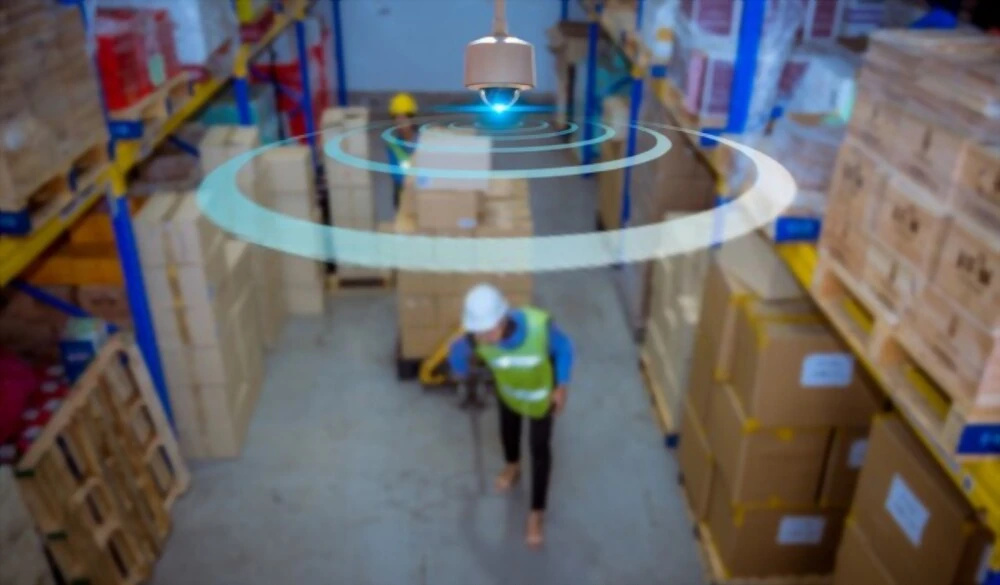Are you worried about physical theft, vandalism, robbery, or employee security in your warehouse? After all, your warehouse is supposed to be a safe place for your inventory and employees. Isn’t it?
In 2018, shoplifting/external issues contributed to 35.7% of retail inventory shrinkage in the United States. This clearly depicts the fact that inventory management, employee theft, and overall warehouse security is a serious concern for warehouse officers.
Being a vital component of the supply chain, the warehouse serves as a hub for storing and distributing goods to various destinations. It is, therefore, imperative for businesses to arrange proper security for warehouses to protect their inventory and property from theft, damage, and other risks, thereby reducing the possibility of financial loss.
Now, you might be wondering what warehouse security measures does your business need?
In this article, you’ll get to know some proven and tested warehouse security tips that will help you keep your business safe and sound by keeping external and internal threats at bay.
Physical Security Measures
Use of Proper Lighting:
Lighting is indeed a vital part of warehouse security and one of the most important warehouse security tips.

With proper lighting, employees can quickly identify any hazards or obstructions in their work environment and prevent accidents.
In addition to promoting safety, proper lighting also deters criminals from attempting to break in or commit any other crime.
Who would want stocks to disappear from the warehouses just because of poor lighting? A well-lit warehouse creates a sense of visibility and makes it less likely for criminals to target the facility. Vandals and thieves tend to avoid well-lit areas since they are easier to detect and are more likely to be caught on camera.
Furthermore, surveillance cameras and alarm systems are more effective in well-illuminated areas because well-lit warehouses allow for clearer images and videos, and facial recognition technology can be more effective.
Moreover, proper lighting can improve the overall productivity and morale of the employees working in a warehouse by providing a comfortable and promising atmosphere.
Installing surveillance cameras is the most cost-effective solution for enhancing warehouse security.
Cover the Building With Surveillance Cameras
Modern security camera systems can collect high-definition footage and upload it to an offsite server to make identification of thieves easier and preserve the evidence if they try to tamper with the cameras or onsite recording stations.

It can help prevent losses due to theft or damage, externally or internally which can be much more costly in the long run.
For example, if any inventory is missing or any miscalculation in accounting is encountered, CCTV recordings can be seen to identify the cause and time of these mishappenings. They can prove to be a piece of strong evidence to pursue a case against cheaters and frauds.
Cameras are especially effective for preventing employee theft. The employees know that they will be seen and identified. However, video cameras are best when combined with a security officer who watches the video feeds.
Installation of Access Control Systems
An effective strategy for safeguarding high-value merchandise is to install security cages and implement access control systems. This combination makes it significantly more challenging for potential intruders to gain access and helps to ensure that the items remain secure.
Access control systems are a reliable way to ensure that only trusted employees can access the facilities. They may come in the form of passcodes, fobs, digital fingerprint scans, or key card readers, with some systems even allowing managers to track who opened a door and when.
However, it is important to only give access authorization to trusted employees, as there is a risk of codes being leaked or cards being lost. If an access control key falls into the hands of a potential intruder, theft may occur.
Additionally, access control systems can be integrated with other commercial security solutions such as cameras, further enhancing the level of security.
Secure the Doors and Windows of Your Warehouse
Don’t make it easy for thieves to access your warehouse! Weak locks and flimsy doors can be an open invitation for intruders to break in and make off with your valuable inventory.
It is always a good approach to invest in strong, sturdy doors that can significantly slow down potential burglars, giving your security team a better chance to catch them in the act.
To secure rolling doors, it’s crucial to use high-strength locking mechanisms and thicker-gauge steel. Rolling steel shutters can be particularly useful during hurricane season, providing protection against harsh weather conditions and unwanted entry.
When it comes to securing your warehouse, don’t overlook the windows! A strong security strategy involves making it as difficult as possible for intruders to break in through windows.
Use reinforced glass, and window locking mechanisms, or even install steel bars or covers. Reinforcing windows and keeping them locked when the warehouse is unoccupied is another essential step.
By fortifying your windows in this way, you add an extra layer of protection to your premises and send a strong message to potential intruders that your warehouse is not an easy target.
Make Sure Your Fencing is Strong
Proper fencing is yet another warehouse security tip that serves as a physical barrier for intruders and helps significantly in the protection of the warehouse.
One example of strong fencing is high-security fencing that is difficult to cut or climb, with features such as anti-climb mesh and welded steel construction. This type of fencing helps prevent the theft of high-value inventory, such as electronics or pharmaceuticals.
Warehouse design is another consideration when it comes to proper fencing. For example, when fencing off an outdoor storage area, it may be necessary to install fencing with a higher level of durability and weather resistance, such as galvanized steel fencing or concrete barriers.
Proper fencing can also help with zoning and partitioning within a warehouse, creating designated areas for inventory, employee workspaces, or hazardous materials.
Some examples of fencing options for warehouse security include chain-link fencing with barbed wire at the top, anti-ram fencing, crash-rated gates, and automated gates with access control systems.
Personnel Security Measures
Conducting Background Checks
The Fair Credit Reporting Act (FCRA) in the USA requires that background checks be conducted in compliance with local and federal laws. Individuals should be given the opportunity to dispute any information found in their background checks and must provide written consent.
When recruiting employees, their backgrounds must be checked and evaluated thoroughly so that only competent individuals are hired.
Background checks can help identify any red flags such as criminal history, drug use, or other behavioral issues.
For example, when a warehouse outsources its security services to a third-party contractor, a background check may be required before granting access to security personnel.
Similarly, if a vendor is providing equipment or materials to the warehouse, a background check may be necessary to ensure that the vendor is reputable and trustworthy.
Employees having access to sensitive information such as inventory storage rooms or data centres must also have their backgrounds checked to ensure they have a clean background.
Focus on Employee Training
By providing proper training, employees can be an important part of the overall security strategy for a warehouse. Train your employees for:
- Security measures: All warehouse employees should be trained on security actions. The training should teach them how to properly use access control systems, how to identify and report suspicious activity, and what to do in the event of an emergency.
- Security awareness: Educating employees on security awareness and how to recognize potential threats is crucial. An employee should, for instance, be able to catch a person with abnormal behaviour.
- Emergency response: Employees should be trained on how to deal with emergency situations, such as how to evacuate the building in the event of a fire or other emergency, and how to react when a security breach occurs.
- Cybersecurity: Since warehouses increasingly use technology, workers should also be trained in cybersecurity best practices, such as identifying phishing scams.
Installation of Effective Identification Systems
Tracking of movement of inventory and people is a must. Your employees are not the only ones bringing things in and out regularly. Also, there are multiple exits and entrances, and they may not all be staffed 24 hours daily.
The following identification systems play their part in keeping an eye on the overall warehouse activities:
- Video cameras can be used to record the movements in and out of the facility
- Using RFID tags, inventory items can be tracked and monitored in real time within the warehouse. This way, theft and unauthorized removal of items from a warehouse can be prevented.
- Employee ID card ensures the entry or exit of legit people in and out of business. It also limits access to certain warehouse areas based on employees’ roles and levels.
- License plate recognition systems are used to observe the movement of vehicles entering or leaving the warehouse premises.
- Access control systems help to monitor and investigate incidents by noting the movement of employees in and out of the facility.
Protection of Limited Access Areas
Items of high value, hazardous materials, or confidential information are typically stored in restricted access areas.
Here’s how you can protect the limited access areas of your warehouse to prevent the facility and its assets from any malicious activity:
- Warehouse access control systems are critical in limiting access to certain areas. A key card system, biometric identification system, or password-protected system can be used to access these systems. Their purpose is to prevent unauthorized personnel from entering restricted areas and tracking their entry and exit.
- Surveillance cameras are useful for monitoring restricted areas, deterring unauthorized entry, and investigating incidents.
- Access to restricted areas can be prevented through physical barriers. Among these are locked doors, fences, or partitions. It is paramount that they are capable of withstanding forced entry and provide an additional layer of security.
- Regularly monitor the access controls to get hold of any abnormal activity as soon as possible.
Implementation of Visitors Policy
To assure the safety and security of visitors, inventory, and the warehouse itself there are certain policies to be followed. Here are some elements of warehouse visitor policy:
- Registration: Upon arrival, all visitors should register. The visitors should give their names, contact information, and the purpose of their visit.
- Valid ID: Verify visitors’ identities by requesting a valid photo ID. By doing so, unauthorized visitors will be unable to enter the warehouse.
- Visitor escort policy: It is not advisable for visitors to roam the warehouse unattended. Visitors must always be accompanied by an employee. You never know if a burglar disguised as a visitor may be lurking around.
- Safety briefing: Before entering the warehouse, all visitors should receive a safety briefing. As part of this information, you should introduce potential hazards, safety procedures, emergency exits, and evacuation plans.
- Restricted areas: Visitors should not be permitted in restricted areas of the warehouse, such as areas where hazardous materials are stored or where sensitive operations occur.
Inventory Security Measures
Monitoring with Real-time Inventory Tracking
Real-time inventory tracking will allow you to track the movement of goods from the moment they enter the warehouse to the moment they leave your facility.
The system should be easy to use, reliable, and provide accurate inventory data. It helps to identify leaks and quickly take action if required.
Here are some examples of real-time tracking inventory in a warehouse:
- Barcode Scanning: Barcodes are assigned to each item and scanned as it enters and leaves the warehouse. Warehouse managers can track inventory levels in real-time by uploading this information to a central database.
- RFID: Tags with RFID technology are attached to items, and each tag contains a unique identifier. An RFID reader scans the tags as items move into and out of a warehouse, updating the central inventory database in real-time.
- GPS Tracking: A GPS tracking system can monitor the movement of goods in real-time. Using this technology, warehouse managers can track inventory levels, shipment locations, delivery times, and other important information in real time.
- Mobile Scanning: A mobile scanner can update inventory levels in real-time as items move through the warehouse, providing warehouse managers with real-time tracking information.
Adopt Secure Storage Methods
Secure storage methods are one of the most powerful ways to safeguard your inventory. Secure storage methods involve:
- Storing inventory in a secure location, such as a locked warehouse
- Invest in high-quality locks, to prevent theft and burglary.
- Alarms and automated alerts to react to emergency situations
- Surveillance systems to monitor the activities.
- Limit access to your storage areas with confidential items.
- Conduct regular audits to ensure that your inventory is secure.
Adequate Warehouse Layout Design
Your warehouse design is an essential element when it comes to inventory security. A well-designed warehouse layout based on product size, weight, and demand can help you optimize your storage space, increase productivity, and improve inventory security.
Design your warehouse to enhance your inventory security in the following ways:
Zoning:
The process of zoning involves grouping items with similar characteristics together. This method improves order-picking accuracy and helps you keep track of inventory. For example, zones can be created for items with high value, low demand, or special storage requirements.
Traffic Flow:
You need to optimize traffic flow to prevent congestion and minimize accident risks in your warehouse. You can use barriers, safety signs, and floor markings to guide the movement of personnel and equipment.
Surveillance Cameras:
You can install cameras at strategic locations such as entrances, exits, and high-value inventory areas. You can also integrate your camera system with an inventory management system to monitor inventory movement and track irregularities.
Lighting:
It is surely challenging for thieves to operate in the dark. You can install motion-activated lights in high-risk areas to alert security personnel in case of any suspicious activity.
- Ensure Shipment Security
Successful businesses always pay attention to the security of their shipments during transportation. Following warehouse security procedures can help you safeguard your inventory during transit:
- Tamper-evident seals: Packages, crates, or containers possessing the goods must not be tampered with during transportation. These seals have a special purpose to indicate any signs of tampering if they are broken or removed ensuring that your inventory has not been opened or tampered with.
- GPS tracking: Route deviations and unauthorized stops can easily be spotted through GPS tracking. It also assists in case of theft or loss of goods.
- Secure vehicles: Vehicles equipped with locks, alarms, and surveillance cameras are the safest to deal with.
- Regular audits: Audits are the best way to assess the effectiveness of security procedures. Any gaps or vulnerabilities are easily caught and adjustments can be made to improve shipment security.
Develop a comprehensive security plan with the assistance of your logistics provider in order to identify security threats. Your logistics provider will be able to help you implement shipment security measures.
For example, depending on your inventory type, destination, and mode of transportation, they can recommend specific shipment security measures.
- Enforce Fraud Prevention Strategies
In many cases, fraud occurs as a result of theft by employees, the sale of counterfeit products, and fraudulent returns. A secure business environment includes employee background checks, product authentication systems, and return policies.
You must develop a comprehensive fraud prevention plan by working closely with your employees, vendors, and customers to identify potential security threats. A regular audit of your fraud prevention measures is also recommended.
Emergency Response Plan
Emergencies can occur anytime. Having a quick action plan is mandatory for minimum financial loss of people and inventory. An active and effective emergency response plan ensures maximum security for warehouse.
- Fraud detection: To avoid scams and fraud, surveillance cameras, secure access control systems, and regular audits are imperative.
- Fire safety protocols: In case of fire spreading in the warehouse, fire alarms, sprinkler systems, and quick evacuation plans come in handy.
- Storage handling: Steps like proper labelling, storage, handling hazardous materials, and regular inspections ensure compliance with safety regulations.
- Disaster recovery planning: A detailed plan must be made to respond to natural disasters, cyber-attacks, and other emergencies.
- Employee training programs: The staff must know how to react and overcome possible threats. Training in emergency response procedures, safety protocols, and the proper use of equipment and tools to prevent accidents and injuries is a must.
Final Thoughts
The above article clearly explains the various warehouse security tips, from installing surveillance cameras to what an emergency response plan looks like, along with their impact on the overall business performance and inventory evaluation.
Make sure to implement them and skyrocket your business dramatically.






